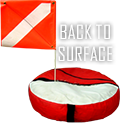History of Wisconsin Antique Stoneware Bottles by Peter Maas
Stoneware bottles were among the first bottles produced for Wisconsin brewers and merchants. The earliest were made in the 1850’s, and more began to appear in the 1860’s. The use of stoneware bottles peaked in the 1870’s, and by the 1880’s they began to fall out of favor. It appears that some were still being used even in the 1890’s, but by the turn of the century they had become obsolete.
Stoneware bottles were made by hand, mostly turned on a potter’s wheel using imported clay. Some were made in plaster molds. Wet liquid clay, about the consistency of syrup, was poured into a mold. The plaster absorbed the moisture at the point of contact with the mold creating solid walls. The remaining liquid was pored out and when the mold was opened the bottle was formed. The formed bottles were then glazed on the inside only with an Albany slip glaze, and then were side stamped with the proprietor’s name or the business name.
Most bottles were “salt glazed” by being fired in a kiln. The temperature increased to a point that was sufficient to vaporize salt thrown thru an opening in the kiln. This created a durable and attractive clear coating with a texture that sometimes resembles an orange peel. The glazing process was somewhat difficult to control. Factors such as temperature, location of the bottles in the kiln, the amount of salt added, the amount of time in the kiln, among others caused distinct differences in the glaze, so color varied greatly from batch to batch. It is also common to find flaws such as scorch marks, turkey eyes, thin or thick glazes. Some stoneware bottles had a glaze on the outside such as Wolf, Schinz, Lockwood and others.
The stamping process was also problematic. Clay bottles with weak, crooked, or inverted stamps are not uncommon. Stamps were sometimes obscured by the glaze. Some bottles were marked more than once. One apparently successful Wisconsin potter was either illiterate, had bad eyesight or both. Nearly every bottle he made had spelling errors in the proprietors name or used the wrong letters, such as an “8” instead of “&” (Menk, Simonds, Grisbaum & Kehrein).
Some bottles were earthenware, which is a lower temperature firing process. Earthenware bottles were less durable than stoneware and the glaze tended to flake off. The potters in Whitewater, Wisconsin made earthen wares exclusively. Their bottles were not incised however. A bottle from Schlachter in Sheboygan appears to have been made in Whitewater.
Clay bottles were not decorated but case markers were commonly used. Cobalt was added to the shoulder or lip to enable a bottler to spot his bottles from among others in a case without pulling them out to read the name. Markings used include a blue band around the shoulder (Husting and Gipfel), a blue lip (Werrbach, Liebscher), an “x” (Gray), vertical stripe (Henk), or a blue lip and shoulder (Munzinger). Graf & Madlener even used a cobalt flower as a case marker. Some bottlers enhanced the readability of their stamps by adding cobalt to them in the 1860’s. This practice ended by the 1870’s.
The shapes of Wisconsin stoneware bottles are distinctly different from bottles from other parts of the US and evolved over time. The shoulders were rounded rather than square as commonly seen in eastern stoneware bottles, and the necks tended to be longer and more tapered. The style of the lip evolved over the years, from a mushroom shape on the earliest bottles to a tall square style in later years. They were closed with corks and most used a serpentine wire bail that would swing up and over the cork to hold it in place, indicating that the contents were under pressure. Most held about 12 oz. of liquid, while a small number were made in a larger 32 oz. size.
We may never be sure what products were sold in many of the stoneware bottles. Markings rarely identify the contents. However, it appears that most contained beer or soda, since most of the bottlers who used stoneware bottles made those products. It seems possible that many if not most stoneware bottles were used for non-alcoholic drinks like ginger ale, root beer, flavored sodas and mineral waters. Many bottles from other parts of the US identify the contents as non-alcoholic products. There is a Root Beer from Wm Ehrman, a Ginger Ale from Zink & Rabidaeu, a mineral water from Henk, and an ale from Sanders. Clearly stoneware bottles were used for a variety of products. Clearly stoneware bottles were used for a variety of products.
Most of the stoneware bottles used in Wisconsin for beer and soda were stamped with the bottler’s name. This was done because clay bottles were expensive so they were refilled as many times as possible. Unlike stoneware bottles from the eastern United States, Wisconsin bottlers usually also included the name of the town/city and state along with the proprietor’s name. It is not known if paper labels were used on stoneware bottles. It seems likely that at least some did, but the only example I am aware of is a whiskey from Watertown, Wis.
There were many Wisconsin potters that produced salt glazed wares that probably also made bottles. Evidence suggests that the Charles Hermann factory in Milwaukee produced many of Wisconsin’s stoneware bottles. They were undoubtedly many other potters as well. The only known potter signed bottle is from GUNTHER & BERNS of Sheboygan.
The main advantage that stoneware bottles offered was that they were readily available. A small operator could deal directly with a local potter, could order in small quantities, and could get them made quickly. The alternative was to order glass bottles from an out-of-state glass manufacturer, where minimum order quantities were higher, lead times longer, and freight cost more. It appears that none of the large Milwaukee brewers like Best, Pabst, Schlitz, Blatz, or Jung used stoneware bottles, although there is a Blatz branch bottle from St. Paul, Minnesota.
Why did people stop using stoneware bottles for beer and soda? There are several apparent reasons. Glass bottles were becoming more readily available and less expensive, especially after 1880 when the Chase Valley Glass Company opened. Consumers could see what they were about to drink from glass bottles and it was easier for bottlers to make sure they were clean before refilling. Glass offered the advantages of less weight and more consistent capacity.
Stoneware bottles reflect of the primitive existence lived by early settlers. They were simple utilitarian vessels, yet they were extremely tough and durable. They could be used over and over, and often would not break even if dropped on a hard floor. Each bottle has unique characteristics of glaze, color, and form. They are not widely collected, are relatively available, and new varieties are constantly turning up. There are over 100 different varieties known from Wisconsin alone, far more if you include variants such as double stamps, color differences and other differences. Stoneware bottles have always been one of my favorite categories.
Following is a list of all of the Wisconsin companies that I am aware of that used stoneware bottles.
- Phillip Altpeter - Milwaukee
- G. Banse Co. - Cedarburg
- John Berg - Milwaukee
- Blatz - Milwaukee (St. Paul Minn.)
- Chatfield - LaCrosse
- N. Eberl - Wisconsin Rapids (Grand Rapids, Wis.)
- John Enes - Milwaukee
- J.B. Ferstl - Ashland
- Dr. Fricke - Cedarburg
- Charles Gipfel - Milwaukee
- Graf & Madlener - Milwaukee
- John Graf - Milwaukee
- C. Gray - Janesville
- W.H. Gray - Milwaukee
- Grisbaum & Kehrein - Milwaukee
- H. Grove - Madison
- Gunther & Berns – Sheboygan (stoneware manufacturers)
- E.R. Hantzsch - Eau Claire
- A.C. Henk – Waukesha
- Henk & Co. - Milwaukee
- F. Hens - ?
- S. Hickey - Milwaukee
- A.J.H. - Racine?
- Hopkins & Co - Milwaukee
- Huchting Brothers - Madison
- E.L. Husting - Milwaukee
- G. Karl – LaCrosse (Gustav Carl)
- S. B. Kupfer - Kenosha
- L. Liebscher - Milwaukee
- Liebscher & Berg - Milwaukee
- Lobb & Bond - ?
- J.H. Lockwood - Fond Du Lac
- Meeske & Hoch - Milwaukee
- I.S. Meister - Milwaukee
- F. Meixner - Milwaukee
- Th. Menk – Watertown
- Th Menk - Waterloo
- Ch. Munzinger - Milwaukee
- B. Niehoff - Eau Claire
- North Lake Brewery -North Lake
- Jos. Pantz - Milwaukee
- R.P.S. (R.P. Sanders) - Milwaukee
- A. Schiffmann - Oshkosh
- L. Schiffmann – Oshkosh (son of Anton)
- Henry Schinz - Milwaukee
- Schlachter - Sheboygan
- H & J. Schulkamp - Madison
- R. Schwalbach - Newberg
- F. Schwartz - Milwaukee
- Simons - West Bend
- P. Stamm - Fond Du Lac
- Taylor & Bro. - Milwaukee
- Wm. Weber - Racine
- Wm. Weber - Grafton
- John Weissenberger - Milwaukee
- L. Werrbach - Milwaukee
- Welms – Milwaukee (John Wilms, South Milwaukee)
- Whitewater – various potters in Whitewater made bottles (unsigned)
- Wolf & Seward - Milwaukee
- Jos. Wolf - Milwaukee
- O. Zwietusch - Milwaukee
A full catalog of as many Wisconsin stoneware bottles as possible is available here. If you have or know of one that is not listed please contact me with a description and photo if possible. We will credit you for the contribution.








